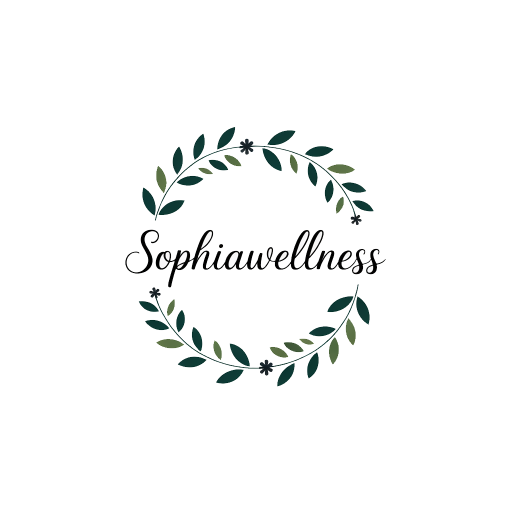The Best Journaling Prompts for a Calm and Focused Mind
To cultivate a calm and focused mind, start your day with morning mindfulness prompts like jotting down your intentions or affirmations. In the evening, reflect on your experiences and key learnings. Incorporate gratitude journaling to appreciate small moments and use stress relief prompts to identify and let go of tension. Enhance your practice with creative visualization techniques and positive habit formations. There’s so much more to explore that can elevate your journaling experience.
Key Takeaways
- Begin your day by journaling affirmations that reinforce a calm and focused mindset, such as “I am fully present and engaged in my tasks.”
- Reflect on moments of gratitude each day to cultivate appreciation and center your thoughts, enhancing your overall mood.
- Identify stressors and articulate one thing to let go of, fostering a clearer mind and reducing tension.
- Visualize a peaceful natural setting or future success during journaling, engaging your senses to enhance relaxation and focus.
- Document small accomplishments daily, acknowledging progress to build a sense of calm and groundedness in your routine.
Morning Mindfulness Prompts
As you wake up each morning, consider using mindfulness prompts to set a positive tone for your day.
Start by journaling affirmations that resonate with your goals and values. Write statements like, “I’m capable of handling challenges” or “I attract positivity.” This practice not only reinforces your mindset but also sharpens your focus.
Next, take a few moments to reflect on what you’re grateful for. This simple act cultivates appreciation and centers your thoughts.
You might also jot down your intentions for the day ahead, ensuring clarity in your actions. Additionally, integrating affirmations and journaling into your routine can significantly enhance your personal growth journey.
Evening Reflection Prompts
How did your day unfold? As evening settles in, take a moment to reflect.
What moments challenged your focus, and how did you respond? Consider the choices you made today—did they align with your values and goals?
Identify a key learning from your experiences. What did you accomplish, no matter how small? This isn’t just about success, but also growth.
Which emotions surfaced throughout the day, and what triggered them? Acknowledge these feelings without judgment.
Finally, envision tomorrow: what intention will guide you? Incorporating affirmations and journaling into your evening routine can enhance your self-awareness and promote calmness.
Gratitude Journaling Ideas
Incorporating gratitude into your journaling can transform your mindset and enhance your well-being.
Start by reflecting on daily moments of gratitude, appreciating nature around you, or noting acts of kindness you’ve experienced or given.
These simple practices can help you cultivate a more positive outlook on life. Additionally, integrating daily journaling into your routine can further boost your productivity and mental clarity.
Daily Gratitude Reflections
Daily gratitude reflections not only enhance your mood but also sharpen your focus. Here are five prompts to get you started:
- What made you smile today?
- Who’s someone you appreciate in your life, and why?
- What’s a challenge you faced recently that taught you a lesson?
- What’s a simple pleasure you enjoyed today?
- What’s a quality in yourself that you’re proud of?
Engaging with these prompts can deepen your self-awareness and foster a mindset of abundance. By incorporating affirmations and journaling techniques, you can further amplify the positive impact of your gratitude practice.
Embrace this practice, and watch how it transforms your perspective.
Nature Appreciation Moments
As you step outside and breathe in the fresh air, take a moment to appreciate the beauty of nature around you. Notice the vibrant colors of the leaves, the gentle rustle of the wind, and the melodic chirping of birds.
Each element contributes to a tranquil atmosphere that invites reflection. Jot down three things you observe that evoke a sense of peace. Perhaps it’s the way sunlight filters through the trees or the intricate patterns on a flower petal.
Embrace these moments; they ground you in the present. Consider how nature calms your mind and nurtures your spirit. Engaging in positive affirmations can further enhance your ability to appreciate these serene moments.
Conclude your entry by expressing gratitude for these experiences, allowing your appreciation to deepen and enrich your journaling practice.
Acts of Kindness
Have you ever noticed how a simple act of kindness can brighten your day? Engaging in and reflecting on acts of kindness not only uplifts others but also cultivates a sense of gratitude within you.
As you journal, consider these prompts to deepen your appreciation for kindness:
- Write about a recent act of kindness you received and how it impacted you.
- List five kind gestures you can offer to others this week.
- Reflect on a time when your kindness made a difference in someone’s life.
- Describe how kindness creates a ripple effect in your community.
- Note the feelings that arise when you practice kindness.
Stress-Relief Prompts
How can you find peace in the chaos of daily life? Turn to journaling with stress-relief prompts that guide your thoughts. Reflect on what weighs you down and pen it out. Here’s a simple table to inspire your entries:
| Prompt | Response |
|---|---|
| What are three things causing stress? | |
| Describe a perfect relaxation moment. | |
| What’s one thing you can let go of? | |
| List five things you’re grateful for. |
Use these prompts to channel your emotions and gain clarity. Embrace the power of your words to alleviate tension and cultivate resilience. By understanding your stressors, you’ll master the art of steering through life’s demands gracefully.
Creative Visualization Techniques
Creative visualization techniques can transform your journaling practice by helping you picture your goals and aspirations.
You can explore guided imagery exercises, create a vision board, or integrate mindfulness meditation techniques into your routine.
These methods not only enhance clarity but also foster a sense of calm and focus.
Guided Imagery Exercises
While you might be familiar with various relaxation techniques, guided imagery exercises stand out as a powerful method for calming the mind and enhancing your overall well-being.
These techniques allow you to visualize serene environments, fostering tranquility and focus. To master guided imagery, keep these tips in mind:
- Find a quiet space where you won’t be disturbed.
- Close your eyes and take deep, calming breaths.
- Visualize a peaceful scene, like a beach or forest.
- Engage your senses by imagining sounds, scents, and textures.
- Reflect on your experience to deepen your connection.
Vision Board Creation
As you explore the concept of vision boards, you’ll find that they serve as powerful tools for manifesting your goals and dreams.
Start by gathering images, quotes, and symbols that resonate with your aspirations. Choose a board—whether physical or digital—and arrange your items in a way that inspires you.
Visualize your goals as you create, focusing on the emotions tied to achieving them. This process enhances clarity and intention, aligning your subconscious with your desires.
Regularly revisit your vision board, allowing it to energize and motivate you. Integrate affirmations that reinforce your vision, and let this visual representation guide your daily actions.
Mindfulness Meditation Techniques
Creating a vision board can ignite your imagination, setting the stage for mindfulness meditation techniques that enhance your focus and clarity.
By integrating creative visualization into your practice, you can deepen your connection to your goals and cultivate a serene mindset.
Here are some techniques to contemplate:
-
Guided Imagery: Visualize your ideal day, embracing the feelings and sensations.
-
Breath Focus: Imagine inhaling calmness and exhaling tension with each breath.
-
Nature Visualization: Picture yourself in a tranquil natural setting, absorbing the surroundings.
-
Future Self: Envision where you’ll be in five years, feeling the emotions of success.
-
Body Scan: Visualize energy flowing through your body, releasing stress from each muscle.
Practice these techniques regularly to master your mindfulness journey.
Affirmations for Focus
To enhance your ability to focus, incorporating affirmations into your daily routine can be a powerful tool. Start each day by declaring, “I am fully present and engaged in my tasks.” This simple statement reaffirms your commitment to concentration.
When distractions arise, remind yourself, “I choose clarity over chaos.” This helps you redirect your thoughts swiftly. Consider writing these affirmations in your journal, reinforcing their impact on your mindset.
Aim to repeat them throughout the day, especially during moments of doubt or distraction. By consistently practicing these affirmations, you’ll cultivate a stronger, more disciplined focus.
Embrace this practice, and watch your productivity and clarity soar, allowing you to master your tasks with intention and purpose.
Letting Go Prompts
Letting go can be a transformative process, especially when you recognize what’s holding you back. By addressing these barriers, you create space for growth and clarity.
Here are some prompts to guide your journaling:
- What beliefs or judgments do I need to release to move forward?
- Which past experiences am I clinging to, and how do they affect me now?
- What negative emotions am I allowing to control my thoughts?
- How can I forgive myself or others to lighten my emotional load?
- What expectations do I need to let go of to embrace the present?
Use these prompts to explore your feelings and draw insights. Letting go isn’t always easy, but it’s essential for cultivating a calm, focused mind.
Positive Habit Formation
While you might find it challenging to establish new habits, positive habit formation can greatly enhance your mental well-being. Start small and focus on consistency. Journaling about your progress can help reinforce these habits. Here’s a simple table to guide you:
| Habit | Trigger | Reward |
|---|---|---|
| Daily Reading | Morning coffee | Relaxed mindset |
| Exercise | After work | Increased energy |
| Meditation | Before bed | Better sleep |
| Gratitude | End of the day | Enhanced positivity |
Nature-Inspired Journaling
Nature-inspired journaling offers a rejuvenating way to connect with your surroundings and cultivate mindfulness. By immersing yourself in nature, you can enhance your journaling practice and deepen your self-awareness.
Here are some prompts to guide your exploration:
- Describe the colors, textures, and sounds of your favorite natural setting.
- Reflect on a moment when nature inspired a significant realization for you.
- Write about a specific plant or animal and its symbolism in your life.
- Capture the feelings and thoughts that arise during a walk outdoors.
- Document a seasonal change you’ve observed and how it relates to your personal growth.
Engaging with these prompts can help you foster a profound connection with the natural world and enhance your mental clarity.
Frequently Asked Questions
How Often Should I Journal for Best Results?
Research shows that journaling just 15 minutes daily can considerably boost your mental clarity. You’ll find that consistency matters more than frequency; aim for at least three times a week to truly harness its benefits.
Can Journaling Replace Meditation for Mindfulness?
Journaling can enhance mindfulness, but it doesn’t fully replace meditation. While writing helps you process thoughts, meditation cultivates deeper inner stillness. Combining both practices will optimize your journey toward clarity and focus.
What Type of Journal Is Best for Beginners?
Starting with a simple lined journal feels like planting a seed. It nurtures your thoughts, allowing them to flourish. Choose one that resonates with you; it’ll become a trusted companion on your journey to mastery.
How Can I Overcome Writer’s Block While Journaling?
To overcome writer’s block, try free writing for five minutes. Don’t worry about grammar or structure; just let your thoughts flow. You’ll often find inspiration emerges when you stop forcing it. Keep your pen moving!
Is It Better to Write by Hand or Digitally?
Writing’s like painting; each method adds a unique brushstroke. If you crave tactile connection, go with pen and paper. If speed and editability matter, digital’s your canvas. Choose what fuels your creativity best.





